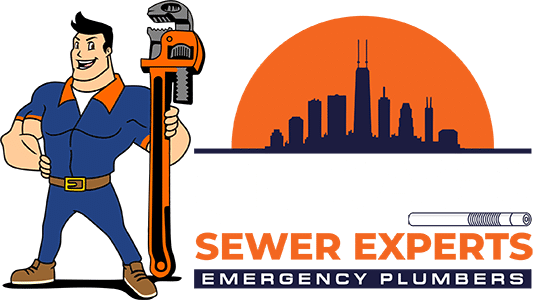As experienced professionals in residential and commercial plumbing and drain cleaning services across the Greater Chicago area, we are committed to helping homeowners safeguard their properties from potential water damage. One key aspect of home protection in our region, which is prone to heavy rains and basement flooding, is the installation of a reliable sump pump system. A sump pump is crucial in preventing basement flooding by collecting excess water and pumping it away from your home’s foundation.
With various sump pump options on the market, choosing the right system for your Chicago home can feel like a daunting task. However, understanding the different types of sump pumps available, along with essential factors such as capacity, power source, and additional features, can make the selection process more manageable.
In this blog post, we will walk you through the critical elements to consider when choosing a sump pump for your home. Our goal is to provide homeowners with valuable insights and guidance, empowering them to make informed decisions that will protect their homes and families from the devastating effects of water damage.
Let us help you navigate the process and choose the perfect sump pump for your Chicago home, ensuring a watertight and secure basement for years to come.
Types of Sump Pumps
Understanding the two primary types of sump pumps is the first step toward making an informed decision. Here’s a brief overview of the most common options:
Pedestal Sump Pump: This type of sump pump features a motor mounted on a shaft above the sump pit, keeping the motor away from the water. Pedestal sump pumps are typically more affordable and easier to access for maintenance. However, they tend to be louder and less powerful than their submersible counterparts.
Submersible Sump Pump: Submersible sump pumps are installed within the sump pit itself, with a watertight motor protected by a sturdy housing. These pumps are generally more powerful, quieter, and better suited for handling solids. However, they tend to be more expensive and may have a slightly shorter lifespan due to their immersion in water.
Capacity and Pumping Power
Selecting the right sump pump capacity and pumping power is crucial for effective basement waterproofing. Factors influencing your choice include the size of your basement, the frequency of flooding, and the volume of water you expect to manage. To determine the correct pump size, consider the following guidelines:
Calculate the area of your basement in square feet and the typical water height during a flood in inches. Multiply these two values to estimate the volume of water you need to pump out.
Choose a pump with a flow rate (gallons per hour, or GPH) sufficient to handle your estimated volume of water. Keep in mind that higher pump capacities are generally preferable, as they are more likely to cope with extreme weather conditions and heavy rainfall.
Power Source and Backup Systems
Most sump pumps rely on electricity from your home’s electrical system, while others may also include a battery backup for added protection during power outages. When choosing a sump pump, consider the following power source options:
Standard AC-Powered Sump Pump: These pumps operate off your home’s electrical supply and are typically the most common option. However, they will not function during power outages unless paired with a backup system.
Battery Backup Sump Pump: These systems include a secondary pump with a dedicated battery to maintain operation during power outages. Battery backup pumps, while more expensive, offer increased peace of mind by ensuring continuous operation during severe weather conditions.
Combination Sump Pumps: These systems combine a primary pump with a battery backup, offering the best of both worlds in terms of reliability, functionality, and protection.
Additional Features and Considerations
As you evaluate different sump pump options, don’t forget to consider additional features and factors that may enhance your system’s performance and longevity:
Automatic Switch: An automatic switch detects water levels and activates the pump as needed, ensuring your basement remains protected even when you’re not around.
Material Quality: High-quality sump pumps with cast iron or stainless steel housings tend to be more durable and long-lasting than models made from plastic or other materials.
Noise Reduction: Submersible pumps are generally quieter than pedestal pumps, and some models may also include sound-dampening features to minimize noise further.
Warranty: Look for a sump pump with a comprehensive warranty to protect your investment and ensure your system is covered in the event of malfunctions or defects.
Conclusion
Selecting the right sump pump for your Chicago home is an essential step in protecting your property from the damaging effects of water ingress and basement flooding. By understanding the different types of sump pumps available, taking capacity and power source requirements into account, and considering additional features and factors, you can confidently choose the system that best meets your home’s unique needs.
Our team of experienced plumbers at Chicago Sewer Experts is here to help guide you through the process of choosing and installing the perfect sump pump for your Chicago home. Reach out to us for expert advice and professional Chicago sump pump installation services, ensuring your property remains protected, dry, and secure for years to come.

Recent Comments